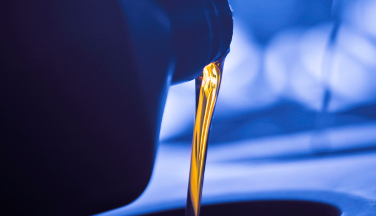Pour Point and Performance
How Accurate a Measure is It?


In our passenger car motor oil business, we get a lot of questions from customers about the pour point of our oils, meaning the temperature below which an oil loses its ability to flow. Specifically, is pour point the best reference for predicting how an oil will perform in cold temperatures?
First, let’s look at how pour point is determined. A sample of oil is cooled rapidly – for example, up to 20o Centigrade (68o Fahrenheit) per hour. The sample is turned on its side at 3oC (37o F) intervals in order to determine oil fluidity. The lowest temperature at which perceptible fluid movement is observed is the pour point.
Although pour point is a commonly reported lubricant property, its unrealistically fast cooling rate, low resolution and low reproducibility make it an unreliable indicator of cold temperature oil performance. For that reason, with few exceptions, it is not typically included in industry or OEM specifications for PCMOs. Importantly, the pour point test is not recognized in SAE J300, the industry standard that defines motor oil “rheology” (the physics field that studies the flow of matter) and viscosity grades. Since the pour point test is relatively quick and easy, it is still commonly performed.
There are two ASTM standard tests that provide more meaningful measures of cold flow performance:
ASTM D52: Cold Cranking Simulator (CCS) provides a measure of an oil’s resistance to flow when cranking an engine with cold oil. Lower CCS results indicate that less crankshaft torque is required to overcome oil viscosity during cold temperature start-up. CCS maximums are dictated by SAE J300.
ASTM D4864: Mini-Rotary Viscometer (MRV) was developed specifically to evaluate oil pumpability following an alarming number of cold-flow field failures in the late 1970s. Lower MRV results indicate that an oil will more readily flow from the oil pan into the engine where it is needed during cold starts. MRV maximums are dictated by SAE J300.
All that said, although pour point is not indicative of in-service performance, we recognize that it is still a topic of interest to our customers. As you may know, Chevron is updating its PCMO product line to align with the new ILSAC GF-6 standard.
08/26/2020

























